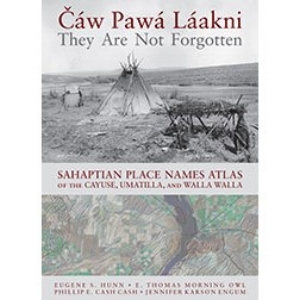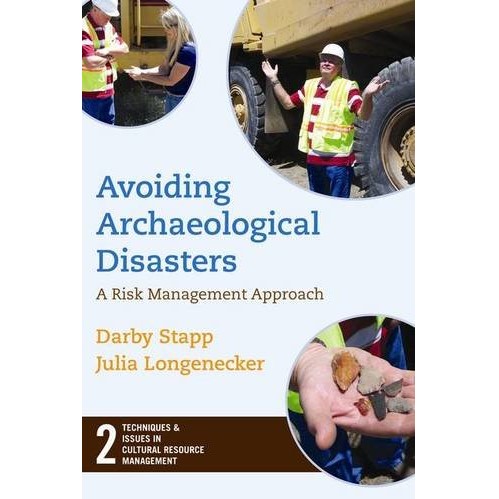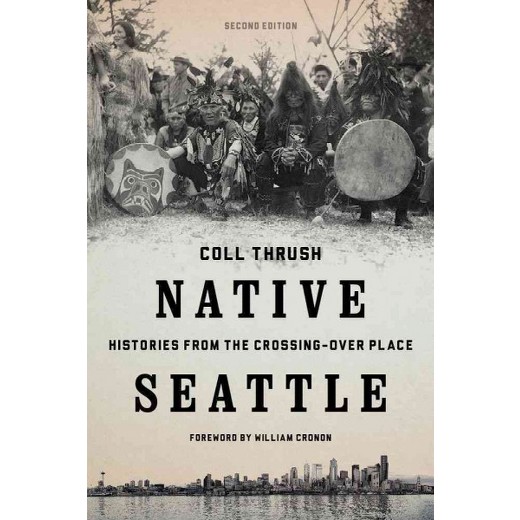Pacific Northwest Anthropological Literature
Notable books focusing on the archaeology, peoples, and cultures of the Pacific Northwest.
(This should not be considered an endorsement of these books by JONA or NWA LLC.)
Also available for digital viewing is Simon Fraser University's Archaeology Press, where 36 monographs and edited volumes are available for FREE online, for both viewing and downloading.
Books by Native authors
Legends of the
Northern PAiute
This book shares and preserves twenty-one original and previously unpublished Northern Paiute legends, as told by Wilson Wewa, a spiritual leader and oral historian of the Warm Springs Paiute. These legends were originally told around the fires of Paiute camps and villages during the “story-telling season” of winter in the Great Basin of the American West. They were shared with Paiute communities as a way to pass on tribal visions of the “animal people” and the “human people,” their origins and values, their spiritual and natural environment, and their culture and daily lives.
Cáw Pawá Láakni
They Are Not Forgotten
This ethnogeographic atlas of Native place names presents a compelling account of interactions between a homeland and its people. A project of the Tamástslikt Cultural Institute at the Confederated Tribes of the Umatilla Indian Reservation–composed of the Cayuse, Umatilla, and Walla Walla Tribes in eastern Oregon–Cáw Pawá Láakni documents and describes more than four hundred place names. The full-color, detailed maps and the narrative that introduces and supports them paint a picture of a way of life. This meticulous assemblage of memory and meaning echoes cultural and geographical information that has all but disappeared from common knowledge.
Books on Northwest Anthropology
Avoiding archaeological disasters
Written by two registered professional archaeologists, this book is for project engineers, project managers, construction managers, the staff of affected government agencies, and archaeological consultants. In its pages you receive enough information, enough archaeological perspective, to intelligently work with the various parties involved in your project and avoid an archaeological disaster.
Riddle of the Bones: politics, science, race, and the story of Kennewick Man
From its discovery in the Columbia River three years ago, reporter Roger Downey has chronicled the epic adventures of the skeleton called "Kennewick Man": first as a pretext for a media feeding-frenzy, then as the centerpiece of a legal circus pitting celebrated scientists against Native Americans, the Corps of Engineers, and the Clinton White House, finally, at long last, as an object of rational scientific study. Downey describes the major players in this continuing debate and details the controversial scientific, religious, and political arguments surrounding Kennewick Man.
Tribal cultural resource Management
The entrance of Native Americans into the world of CRM is forcing a change in the traditional paradigms that have guided archaeologists, anthropologists, and other CRM professionals. This book examines these developments from tribal perspectives and articulates native views on the identification of cultural resource. Stapp and Burney demonstrate the connections between cultural resource and other issues such as native sovereignty, economic development, human rights, and cultural integrity.
Additional Readings
Endangered peoples of north america
Bringing a fresh perspective to multicultural studies, Greaves illuminates the current situation of 13 of our most traditional peoples in the United States and Canada. Included are small tribal groups, ethnic groups with a unique way of life, new immigrants, and refugees with strong roots in war-torn homelands. A broad diversity of cultures is presented, including the Lummi in Washington State, the African Americans in the coastal zone of Georgia, the Amish of Lancaster County, and the Hmong in Wisconsin. The relevant issues of their survival in today's global culture will engage students and general readers alike.
Fishes of the Columbia Basin
(2nd ed.)
Identify and Learn How to Catch 60+ Fish Species of the Columbia Basin. The Great Columbia River Plain is a place unlike any other in the United States, with its steep river valleys, broad floodplains, rolling grassland and barren, rocky slopes known as scabland. Within this region are the streams, rivers and lakes that make up most of the interior Columbia Basin. These waterways support diverse fish populations. In Fishes of the Columbia Basin, fisheries biologist Dennis Dauble draws on more than three decades of professional experience and a lifetime as a fisherman to cover more than 60 fish species found in the region.
Ancient Pathways, Ancestral Knowledge
Nancy Turner has studied Indigenous peoples' knowledge of plants and environments in northwestern North America for over forty years. In Ancient Pathways, Ancestral Knowledge, she integrates her research into a two-volume ethnobotanical tour-de-force. Drawing on information shared by Indigenous botanical experts and collaborators, the ethnographic and historical record, and from linguistics, palaeobotany, archaeology, phytogeography, and other fields, Turner weaves together a complex understanding of the traditions of use and management of plant resources in this vast region.
Native Seattle
(2nd Ed.)
This updated edition of Native Seattle brings the indigenous story to the present day and puts the movement of recognizing Seattle's Native past into a broader context. Native Seattle focuses on the experiences of local indigenous communities on whose land Seattle grew, accounts of Native migrants to the city and the development of a multi-tribal urban community, as well as the role Native Americans have played in the narrative of Seattle.








